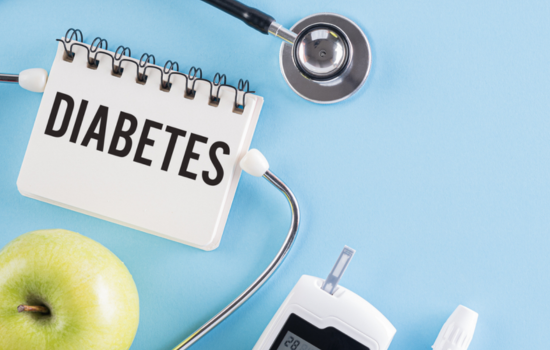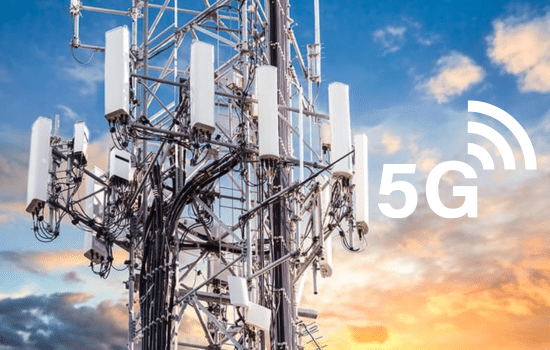Advertisements
Blood sugar management is crucial for those living with diabetes or prediabetes, and today's technology has revolutionized this process significantly.
Thanks to advances in blood glucose monitoring applications, it is now possible to maintain accurate and continuous control of glucose levels, enabling better healthcare decision-making.
Advertisements
In the digital age, these mobile apps offer an innovative and accessible solution for blood glucose monitoring. They not only facilitate daily tracking of blood sugar levels, but also provide detailed analysis and long-term trends.
This information is essential for adjusting diet, physical activity, and medical treatment, resulting in more effective diabetes management.
Advertisements
These apps are equipped with advanced features such as real-time alerts, synchronization with wearable devices, and compatibility with other digital health systems.
In addition, they allow data to be shared directly with healthcare professionals, improving communication and medical follow-up.
The ability to anticipate spikes or drops in glucose levels empowers users to make proactive, personalized decisions about their health.
On the other hand, these technological tools are not only beneficial for patients, but also for their families and caregivers.
The ability to remotely access glucose level information provides peace of mind and security, promoting a supportive environment.
See also:
- Horoscope: Your Personalized Guide to Success
- Master the drums with our app
- Listen to music offline for free anytime
- Catch spirits with one click!
- Easy and fun karate on your cell phone
Exploring the features and benefits of these blood glucose monitoring apps is essential to making the most of their capabilities.
By understanding how they work and what they offer, you can transform diabetes care, optimizing the well-being and quality of life of those who suffer from it.
Advances in Blood Glucose Monitoring Technology
With the rapid advancement of technology, blood glucose monitoring has evolved significantly. Previously, this process required invasive and often uncomfortable testing.
Now, thanks to mobile apps, patients can monitor their blood sugar levels more easily and accurately. These apps not only facilitate data recording but also provide personalized recommendations based on glucose readings. This is crucial for properly managing diabetes and preventing long-term complications.
For example, modern apps allow for seamless integration with continuous glucose monitoring (CGM) devices. This means readings can be updated in real time, giving users immediate insight into their blood sugar levels.
This type of information is invaluable for making informed decisions about diet, exercise, and medication. Additionally, some apps offer automatic alerts when glucose levels fall outside the optimal range, helping to prevent dangerous episodes of hypoglycemia or hyperglycemia.
Key Features of Monitoring Applications
To provide a comprehensive experience, blood glucose monitoring apps come equipped with a variety of features.
First, the ability to record data is essential. Users can manually enter their glucose levels, carbohydrate intake, and insulin doses.
This helps create a detailed record that can be shared with healthcare professionals for better management of the condition.
Additionally, many apps offer trend analysis. By evaluating data over time, users can identify patterns in their glucose levels.
This is especially useful for adjusting treatment and lifestyle strategies. Some apps also include prediction features, using advanced algorithms to predict future glucose levels based on historical data and current habits.
Integration and Compatibility with Medical Devices
One of the great advantages of blood glucose monitoring apps is their ability to integrate with various medical devices.
This not only improves the accuracy of the readings but also simplifies the process for the user. Most leading apps are compatible with CGM devices and insulin pumps, allowing for automatic data synchronization.
This compatibility also extends to smartwatches, which can provide discreet, real-time updates.
This is particularly beneficial for active users who want to monitor their glucose levels without interrupting their daily activities.
Additionally, integration with wearable devices allows access to a broader health ecosystem, where other health indicators can be monitored alongside blood glucose.
Featured Examples of Monitoring Applications
Two apps that stand out in the market due to their effectiveness and ease of use are MySugr and Glucose Buddy. Both have been highly rated by users on platforms like the Apple Store and Google Play Store.
MySugr is known for its user-friendly interface and ability to provide detailed reports that healthcare professionals can use to fine-tune treatment plans.
The app also offers daily challenges that motivate users to keep their glucose levels under control.
On the other hand, Glucose Buddy offers seamless integration with CGM devices and allows users to customize alerts to better monitor their glucose levels.
Additionally, this app offers a community-based approach, where users can connect and share experiences, creating a support network that can be crucial for managing diabetes emotionally.
The Future of Blood Glucose Monitoring Apps
Looking to the future, it's clear that blood glucose monitoring apps will continue to evolve. With the advancement of artificial intelligence and machine learning, these apps are expected to offer even more accurate predictions and personalized recommendations.
These technologies can analyze large amounts of data and provide insights previously unavailable, thereby improving diabetes management.
Furthermore, the expansion of telemedicine means that these applications can play an even more central role in patient care.
The ability to share real-time data with healthcare professionals enables a more collaborative approach to diabetes management.
This not only improves patient outcomes, but can also reduce overall healthcare costs by preventing serious complications.
Benefits of Using Monitoring Applications
The benefits of using blood glucose monitoring apps are numerous. First, they give users greater control over their health.
By accessing detailed information about their glucose levels, users can make informed decisions about their diet, physical activity, and medication. This not only improves their quality of life but also reduces the risk of long-term complications.
Furthermore, these apps offer greater convenience. Users can record their glucose levels anytime, anywhere, eliminating the need to keep physical diaries.
They also allow for customization, adapting to each user's individual needs and preferences. Finally, by offering alert and notification features, these apps can serve as a constant reminder to keep users on track with their diabetes management.
- Access to real-time data for better decision-making.
- Integration with medical devices for an optimized user experience.
- Trend analysis to identify patterns in glucose levels.
- Customizable alerts to prevent adverse events.
- Prediction functions based on advanced algorithms.

Conclusion
In conclusion, blood sugar monitoring apps have radically transformed the way people manage their blood sugar levels.
Thanks to advanced technology, accurate and continuous glucose monitoring is now possible, facilitating informed decision-making in real time.
Furthermore, by integrating with medical devices such as continuous glucose monitors and insulin pumps, these apps offer an optimized user experience. This can help prevent serious diabetes-related complications.
Additionally, the trend analysis and prediction features offered by many of these apps allow for identifying patterns in glucose levels, which is crucial for adjusting treatments and lifestyle habits.
With customizable alerts, users can prevent episodes of hypoglycemia or hyperglycemia, thereby improving their quality of life and reducing the risk of long-term complications.
Additionally, the ability to share real-time data with healthcare professionals facilitates a collaborative approach to diabetes management.
In the future, we're likely to see continued evolution of these tools thanks to artificial intelligence and machine learning, which will enable even more personalized recommendations.
With the rise of telemedicine, blood glucose monitoring apps are poised to play an even more central role in patient care, improving outcomes and reducing healthcare costs.
In short, these apps not only offer convenience and control, but are also an invaluable tool for effective diabetes management.






